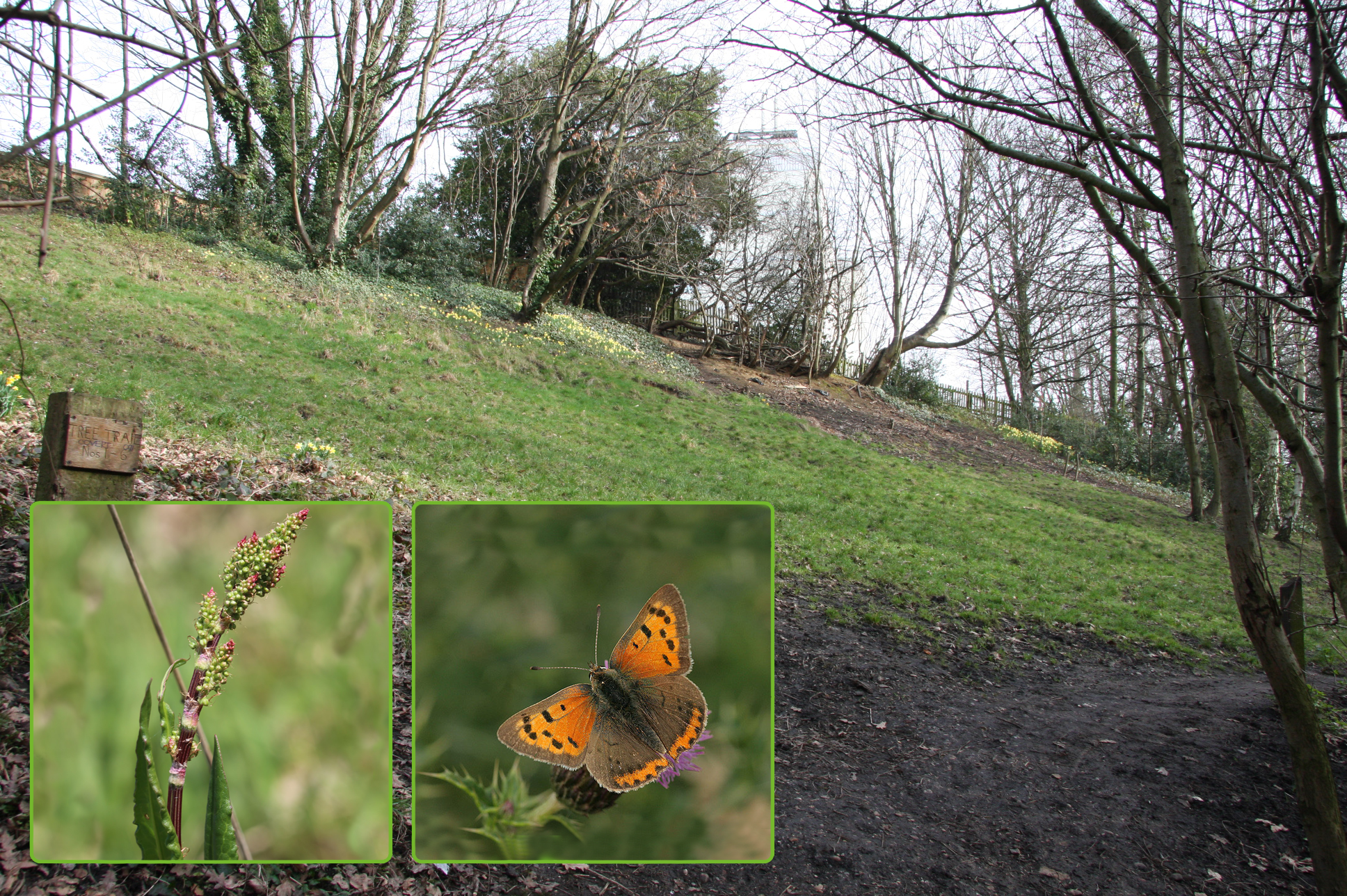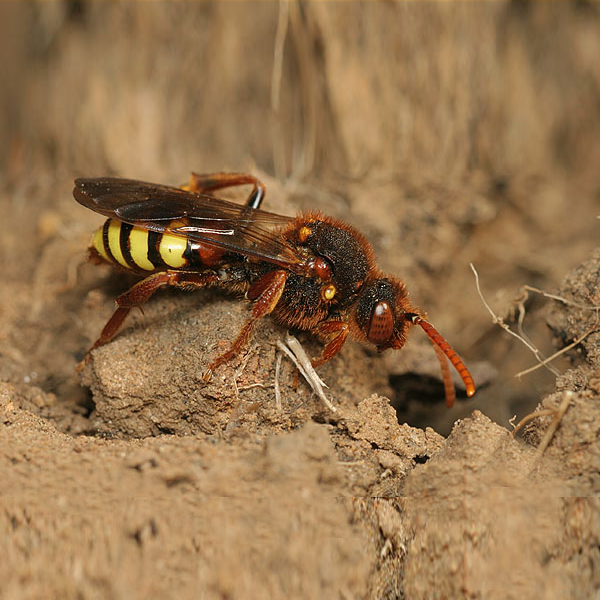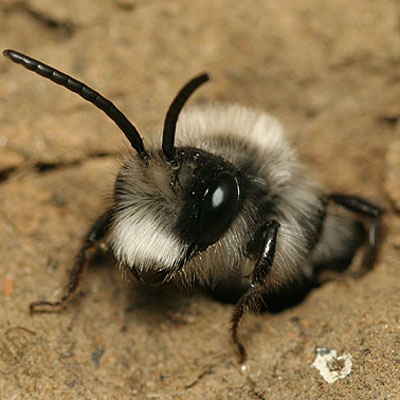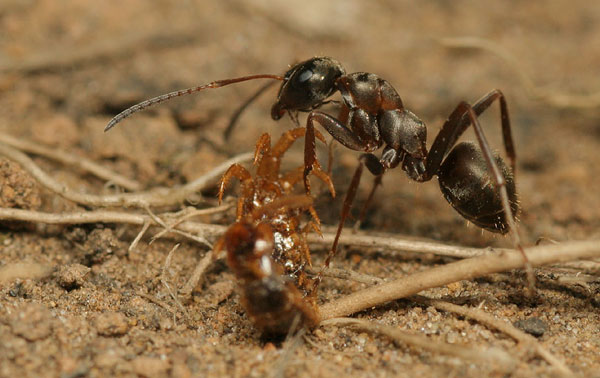The acid grassland, situated in Islington between the Mountview Road bridge and the Blythwood Road entrance gate is the only one of its kind along the Walk, or indeed in the whole of Islington. Lowland acid grassland develops on low-nutrient soils on free draining sandy soils. In this particular example, due to the gradual encroachment of surrounding trees, the overall area has shrunk. Annual leaf-fall can raise nutrient levels within the grassland area and reduce acidity. Fortunately Islington Ecology Centre, along with their volunteers, are doing an excellent job of controlling encroachment and carrying out measures to ensure the pH value is not affected.

One bee species present here is well worthy of mention – the parasitic ‘cuckoo-bee’ (Nomada lathburiana) is on the Red Data List for London and designated ‘rare’ in the Capital. Crucially for the Nomada, its host the ‘mining – bee’ (Adrena cineraria) prefers a sunny, vegetation sparse habitat, within which it tunnels and lays its eggs.

Cuckoo bee, Nomada lathburiana.
The term cuckoo bee is used for a variety of different bee lineages which have evolved the kleptoparasitic behaviour of laying their eggs in the nests of other bees, reminiscent of the behaviour of cuckoo birds. Cuckoo bees typically enter the nests of pollen-collecting species, and lay their eggs in cells provisioned by the host bee such as the Ashy mining bee Adrena cineraria. When the cuckoo bee larva hatches it consumes the host larva’s pollen ball, and, if the female kleptoparasite has not already done so, kills and eats the host larva. Photo: Tristam Bantock

The ashy mining bee, Andrena cineraria.
Females create nests underground by excavating burrows in bare/sparsely vegetated earth often in sandy soils, so the acid grasslands at Crouch End Hill is a good place to find one. They feed from a wide variety of spring flowers and shrubs, including buttercups, hawthorn, blackthorn, gorse and fruit trees. Photo Tristan Bantock

Formica cunicularia
Another insect of special interest in this area is a largish dark brown ant. Formica cunicularia isn’t rare by any means but it was recorded locally early in the 20 Century by E.A Butler in a book called ‘British Ants, their life histories and classification’, compiled by Horace Donisthorpe. It is fascinating to consider that we may well be looking at the same colony today.
